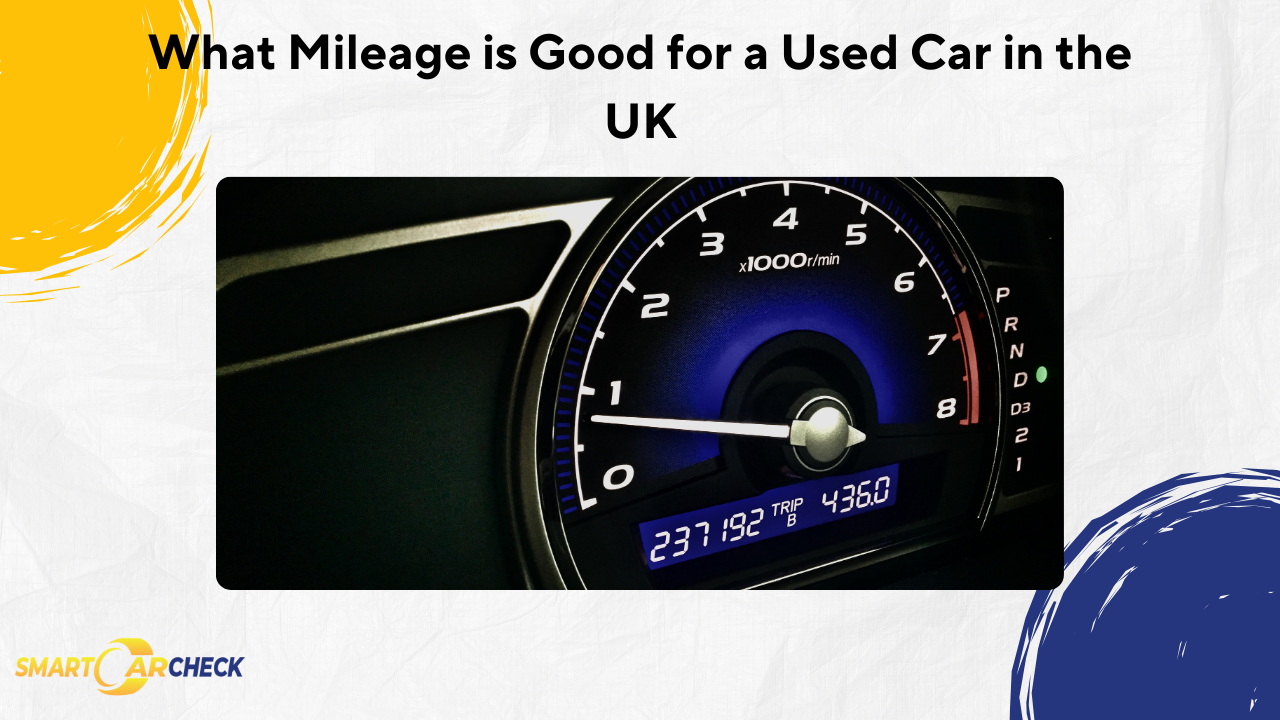Considering the mileage of car, among several other vehicle information, is especially important for buyers looking for a new ride in the used car market. Knowing a used car’s mileage makes it easy to verify just how much it has been used and estimate its reliability.
Mileage not only shows to what extent a car has been driven but also provides at least some notion of how much more likely a car is to be reliable in the future and whether or not it will need some attention.
For example, a car with 7,000 miles will appear more reliable and may be as good as new. On the other hand, a car with 200,000 miles is likely to break down sooner or later due to wear and tear it must have suffered over the years.
But that’s not all there is to it. In this article, you will understand what mileage is good for a used car in the UK and other factors to consider before buying one.
What Should You Consider When Checking a Car’s Mileage?
Some factors actively contribute to a vehicle’s mileage and wear and tear. If you compare two vehicles with equal mileage, but one is used for city drive and the other is used on the motor way, the level of wear is bound to be different.
So when considering the mileage of a car, you should think of other factors, including:
Vehicle maintenance
How often was the car maintained and serviced by previous owners? Did it drive on areas that made it essential to maintain regularly? Simple tasks like regular oil changes, maintaining correct tyre pressure, and replacing air filters can reduce engine strain and reduce wear and tear on a vehicle.
It’s a common misconception that vehicles that have crossed the 100,000 mark in mileage should be avoided. Some people believe that driving a vehicle with this much mileage is no longer safe, but this is not true.
A well-maintained vehicle can undoubtedly run well beyond the 100,000-mile mark.
Driving techniques
Knowing how and where a vehicle was driven is very important as it helps to understand how much wear and tear a vehicle may have sustained.
A car that has been used for city driving since it was first purchased will have more wear compared to one that has been used for motorway driving. You can also say the same for cars used in rural or countryside settings. They will most likely have experienced more wear and tear even though it may have same mileage reading.
It is important to understand that the time spent in each gear, differences in road quality, engine strain, and different distances will make two cars with the same mileage reading practically different.
Car make and model
Considering the make and model of the car really matters a lot.
Modern vehicles are more reliable than older models because of significant advancements in technology and manufacturing processes, and they can also take in a lot of stress without receiving significant damage.
So, you definitely need to consider the vehicle’s make and model and look for one with a reputation for reliability and longevity.
Age of the vehicle
The age of the car should also pass a message and help you identify good mileage. Try to find an estimate of just how many miles were covered per year by that vehicle, and it can help you make a decision.
For example, it’s normal to see a 10-year-old car with 75,000 miles, but a 6-year-old car with the same mileage should raise questions about its usage patterns and maintenance history.
You can see now that it’s not just about the odometer reading. Good mileage depends on many factors, and you need to pay close attention to spot these and make the right decision.
What Mileage is Good for a Used Car?
You can take the average annual mileage of a car to be 7,400 miles. According to several sources, the average mileage of a vehicle was estimated to be 7,400 miles per year in 2019. So, you can use this as a benchmark to evaluate any used car you are interested in.
What is Considered a Low Car Mileage?
Since we already have a benchmark of 7,400 miles per year, you can say a low-mileage car is one with less than 7,400 per year.
How can you tell the mileage per year? Simply divide the total mileage of the car by the number of years it’s been driven. If this figure is less than the average, you can say it has low mileage and has covered less distance than other vehicles its age.
What is Considered a High Mileage for a Used Car?
Just like you can estimate low car mileage with simple calculations, you can also find out high mileage for a used car. Simply put, a vehicle with more than 7,400 miles per year can be considered a high-mileage car.
It means it has covered more ground than other vehicles its age and would most likely have more wear and tear compared to other options.
How Many Miles Should a Used Car Have?
With an average mileage of 7,400 miles per year, we can easily determine the number of miles a typical car should have based on its age.
On average, this is how it should look like:
| Age of car in years | Average mileage |
| 1 | 7,400 |
| 2 | 14,800 |
| 3 | 22,200 |
| 4 | 29,600 |
| 5 | 37,000 |
| 6 | 44,400 |
| 7 | 51,800 |
| 8 | 59,200 |
| 9 | 66,600 |
| 10 | 74,000 |
| 15 | 111,000 |
| 20 | 148,000 |
Remember that there are many other factors to consider when making the best choices in the market. Mileage alone doesn’t guarantee that a vehicle is the right one, and buying a high-mileage car does not translate to unreliable and worn-out.
You need to pay attention to a vehicle’s service history, the make and model, driving techniques, and other factors which can be clearly spotted from a car history report.
Do some cars last longer than others?
Yes, some cars are known for lasting longer than others due to their build quality, engineering, and maintenance practices. Vehicles with reputations for reliability, such as Toyota, Honda, and Lexus, often maintain their performance well beyond 100,000 miles with proper care.
READ ALSO: How to Calculate Fuel Cost and Save Money
Tips on Evaluating Used Car Condition
Mileage is simply an indication of how much wear and tear a vehicle has been through. If you are buying a used car in the UK, checking the mileage is not enough.
Here is a step-by-step checklist to help you find the right vehicle for you:
- Exterior Inspection:
- Check for rust, dents, scratches, and signs of previous repairs.
- Look for consistent paint colour and texture across panels.
- Interior Inspection:
- Inspect upholstery, dashboard, and carpets for wear and tear.
- Test all seats for comfort and adjustability.
- Under the Hood:
- Check fluid levels (oil, coolant, brake fluid).
- Look for any leaks or corrosion in the engine bay.
- Engine Start-Up:
- Listen for unusual noises or vibrations during start-up.
- Note how smoothly the engine runs and how quickly it starts.
- Test Drive:
- Evaluate acceleration, braking, and steering responsiveness.
- Pay attention to transmission shifts and overall handling.
- Instrument Panel:
- Check the mileage displayed against the odometer for consistency.
- Ensure all warning lights turn off after ignition.
- Maintenance Records:
- Review service history for regular maintenance intervals.
- Look for records of major repairs or part replacements.
- Tyres and Suspension:
- Inspect tyre tread depth and condition.
- Test suspension by bouncing each corner of the car; it should settle quickly.
- Electrical Components:
- Test lights, indicators, air conditioning, and heating.
- Check the functionality of power windows, locks, and mirrors.
- Car History Report:
- Obtain a car history report to check MOT history, write-off checks, mileage history over the years, vehicle specifications and registration information, ownership records, and more.
- Verify mileage consistency and any reported issues.
By following this checklist, you can thoroughly evaluate a used car based on its mileage, ensuring you make an informed decision about its condition and potential longevity.
The Bottom Line
On average, you can expect a car to have around 7,400 miles per year. A car with higher mileage is often more affordable than one with lower mileage. However, you must also gather as much information as possible before buying though car VIN check.
Do your research and inspection! The value of a vehicle and its reliability cannot fully be identified with a mileage check. It shows the number of miles and possible wear and tear a vehicle may have sustained, but you also need to do a background check.
What make and model is it? Has the vehicle been properly serviced and maintained over the years? Has it been written off in the past? Getting these answers put you on the right footing and in no time, you can expect to have a reliable used car in your garage.


